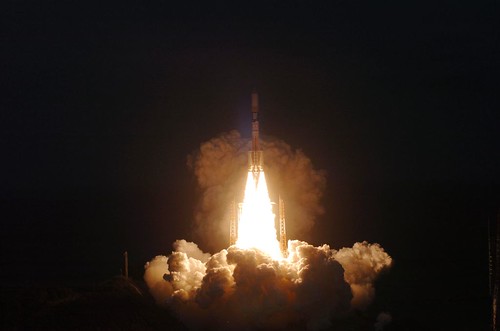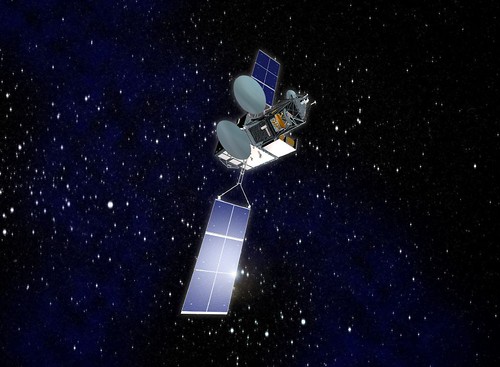Kizuna: The Big Kahuna in Satcom Bandwidth

JAXA‘s new spacecraft, launched via an H-IIA rocket last week, promises 155-Mbps downlink and 6-Mbps uplink speeds:
It is expected that this information and telecommunications network’s speed and capacity will be much higher than anything achieved previously. KIZUNA satellite communication system aims for a maximum speed of 155Mbps (receiving) / 6Mbps (transmitting) for households with 45-centimetre aperture antennas (the same size as existing Communications Satellite antennas), and ultra-high speed 1.2 Gbps communication for offices with five-meter antennas.
In addition to establishing a domestic ultra high speed Internet network, the project also aims to construct ultra high speed international Internet access, especially with Asian Pacific countries and regions that are more closely related to Japan.
KIZUNA project is responsible for the demonstration of the validity and usefulness of technologies related to large-capacity data communications in our space infrastructure project, "i-Space," the purpose of which is to promote the use of satellites in such fields as Internet communications, education, medicine, disaster measures and Intelligent Transport Systems.

JAXA’s been working on this "i-space project" for a while now:
The Japanese Government announced in January 2001 that Japan becomes one of the most advanced countries in the world in the field of Information Technology (IT). They also set a ambitious target to launch an ultra-high speed Internet satellite (i.e. WINDS) by 2005 and completes verification testing of its function.
Recognizing the importance of this commitment toward an advanced information society and in response to a growing social demand to realize broadband communications environment and advanced mobile communications, JAXA proposes a new space project named "i-Space Project". The i-Space Project intends to make contribution to a revolutionized information society, and is accomplished by developing new space-based communication capabilities effectively integrated with ground communication infrastructure. It is also promoted by demonstrating an experiment(s) to prove its effectiveness in as many space-based application areas as possible.
Here’s the launch video: